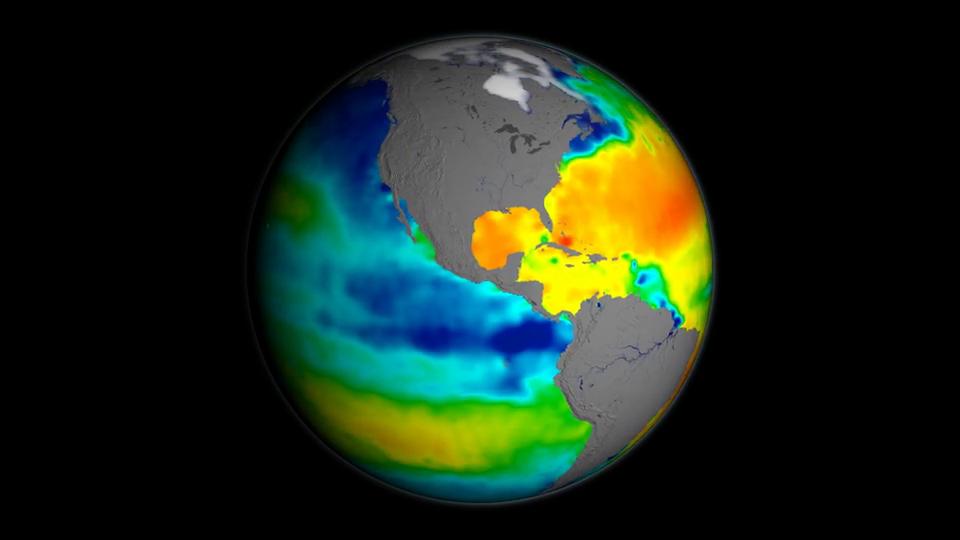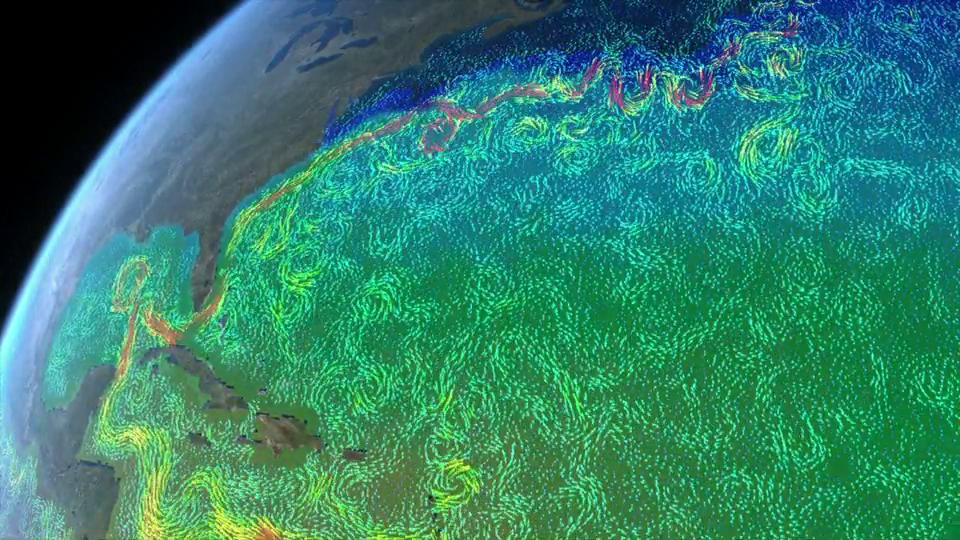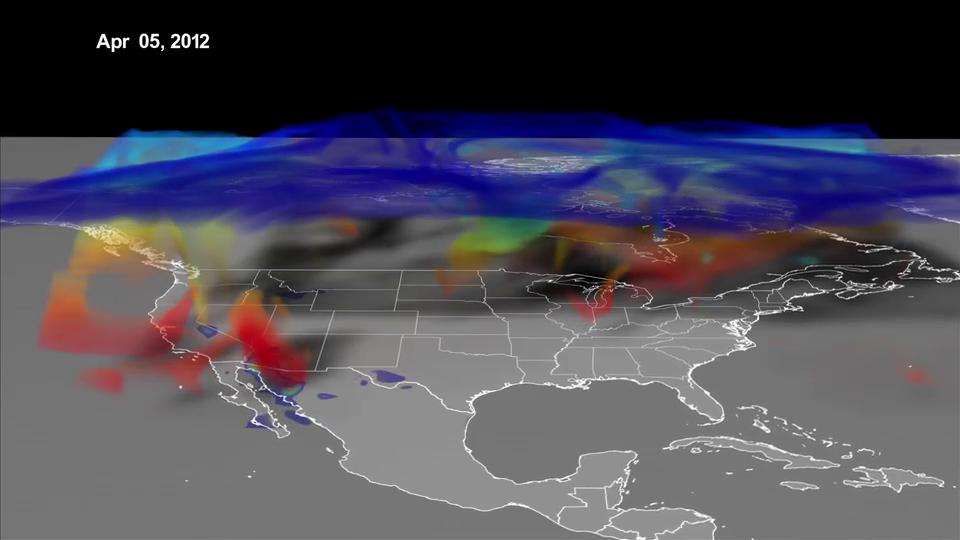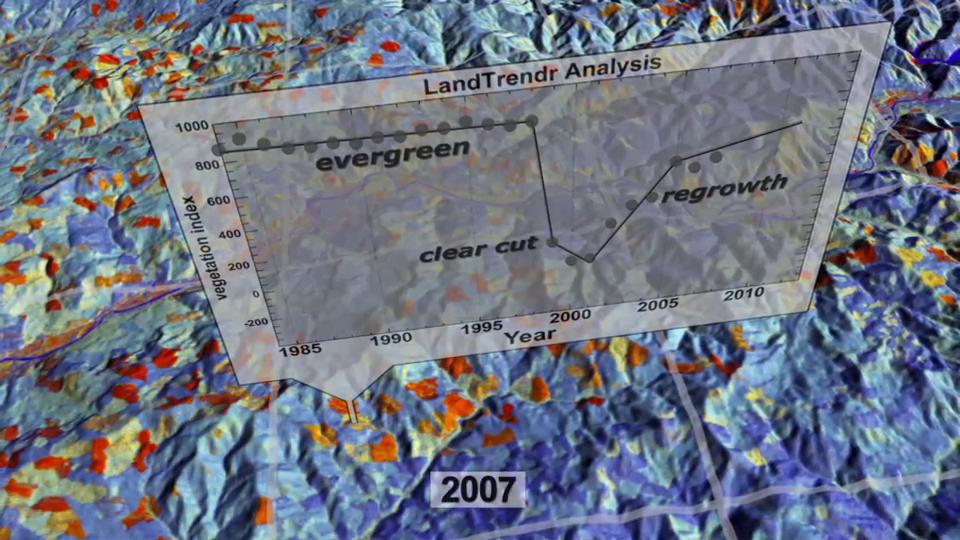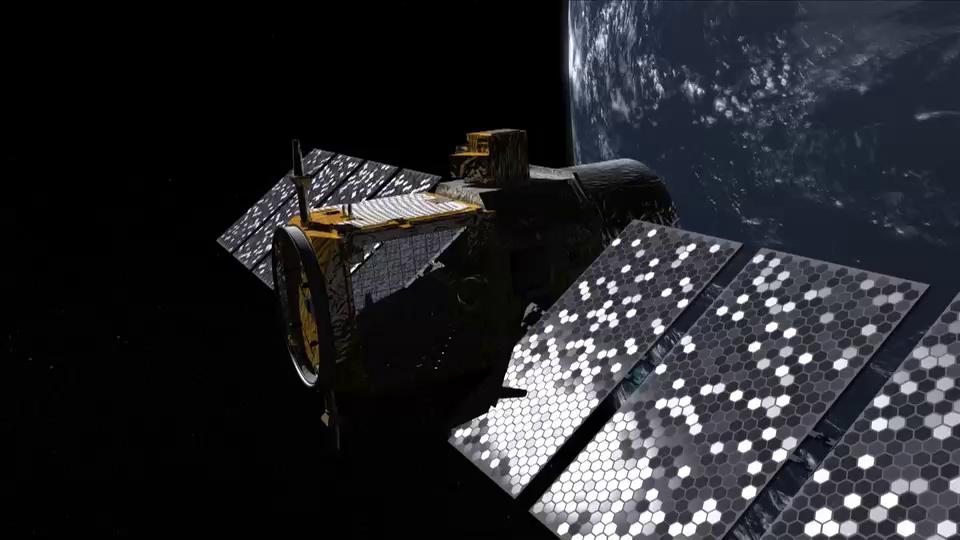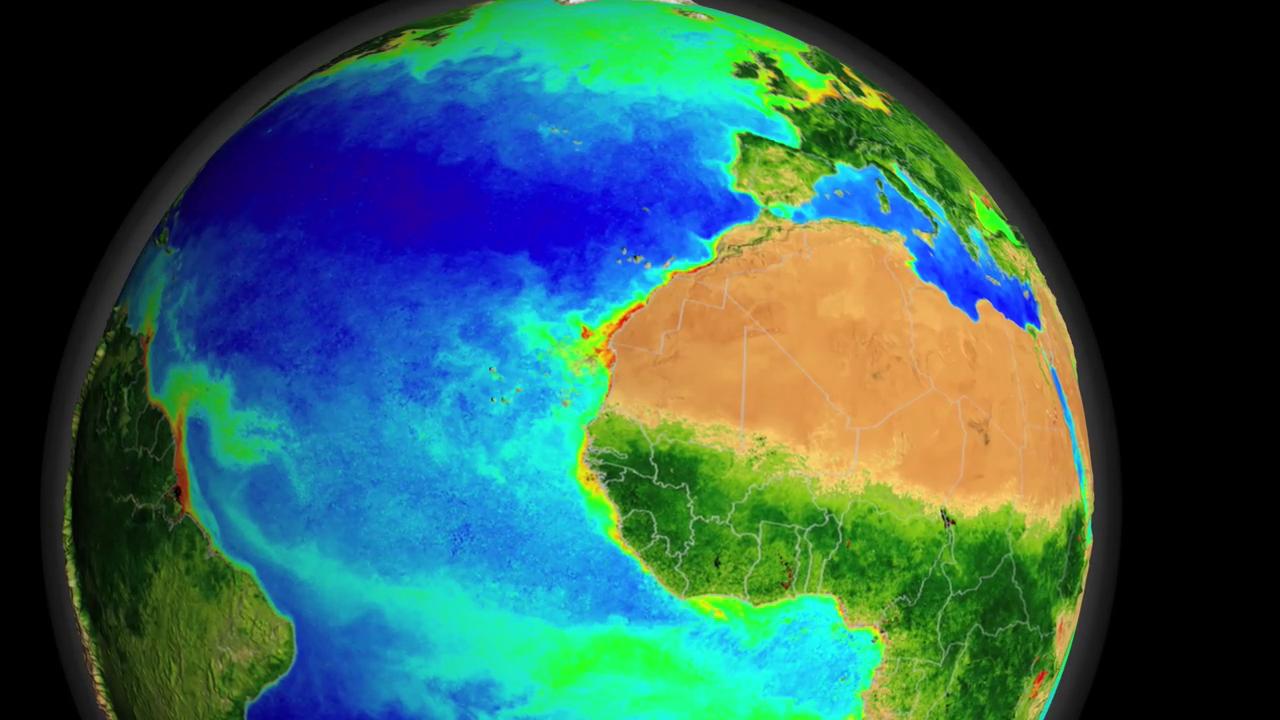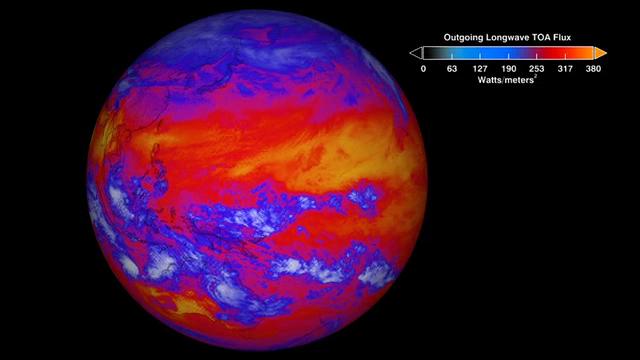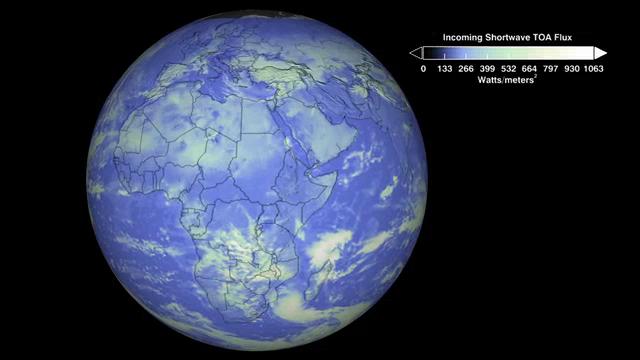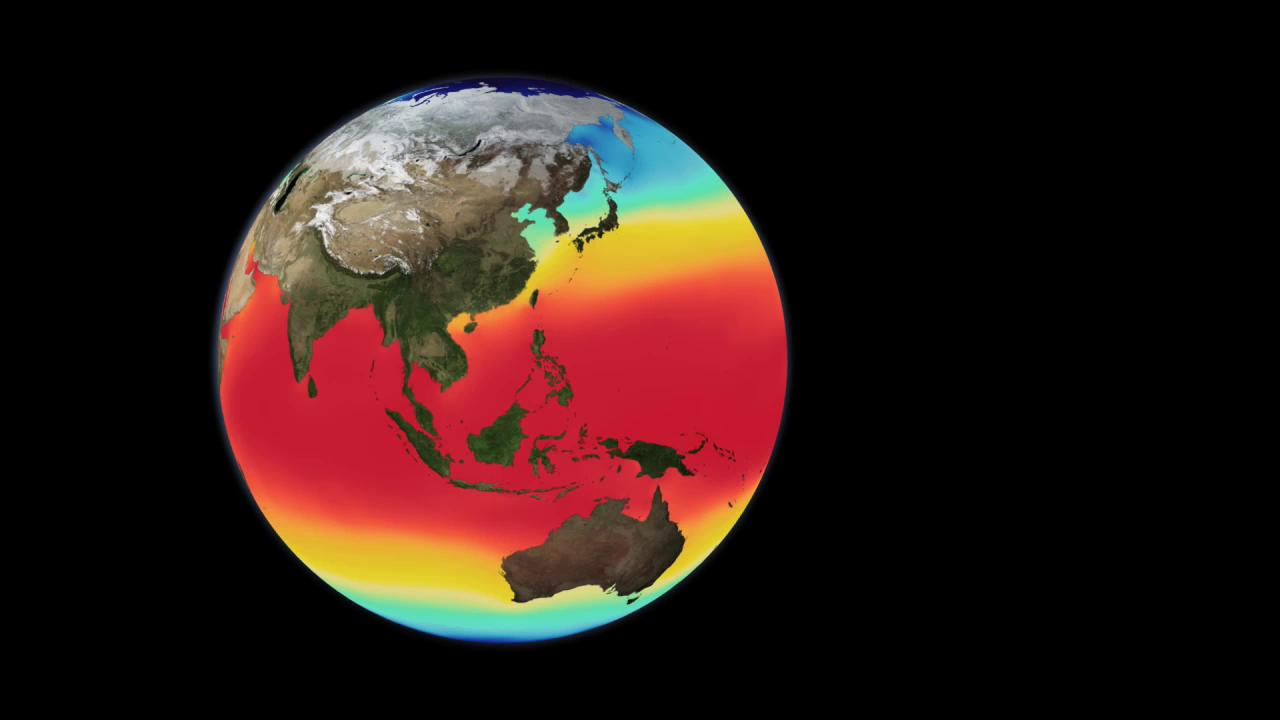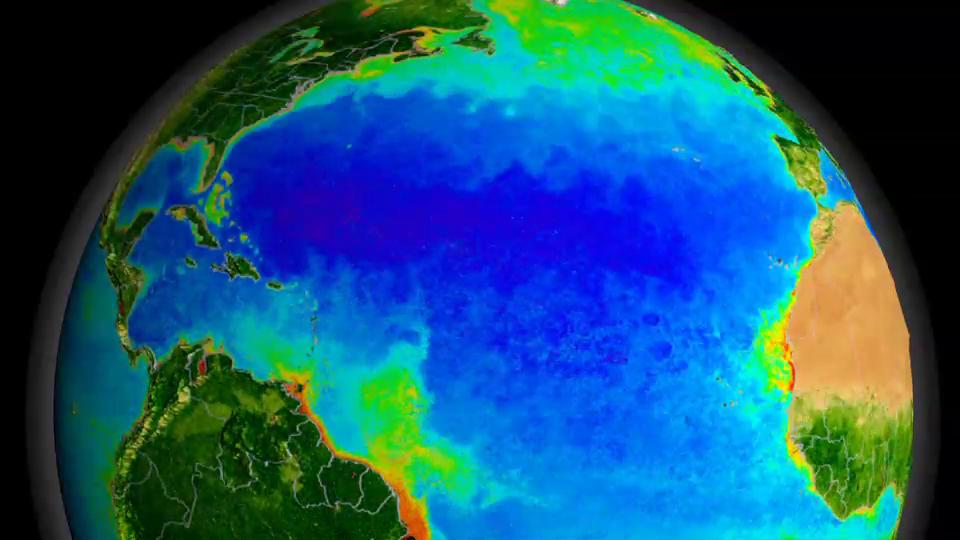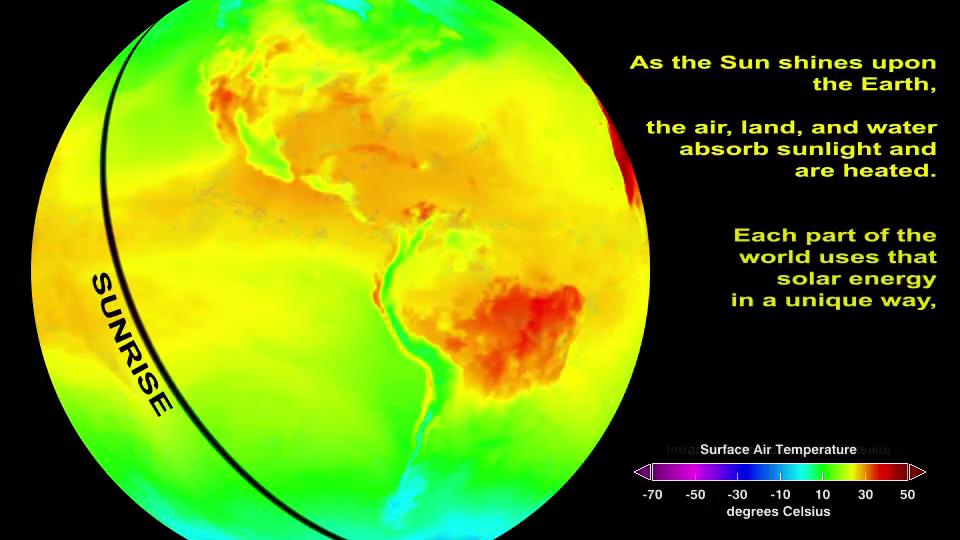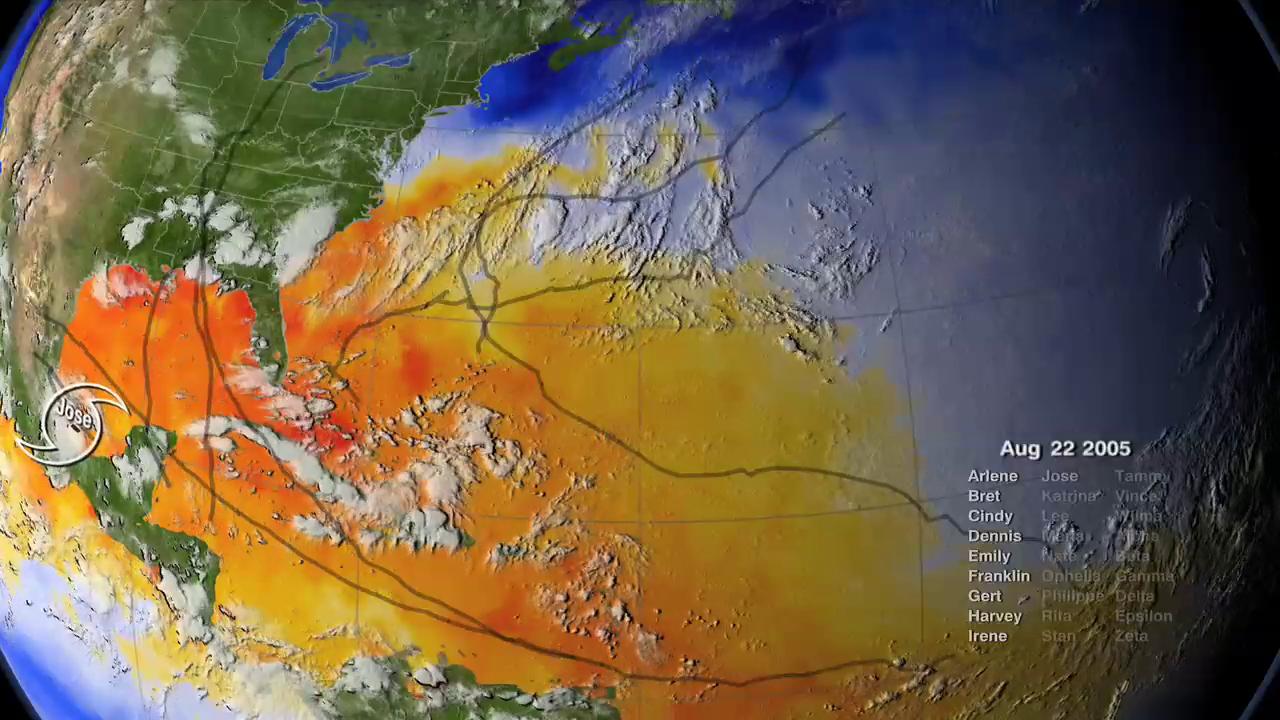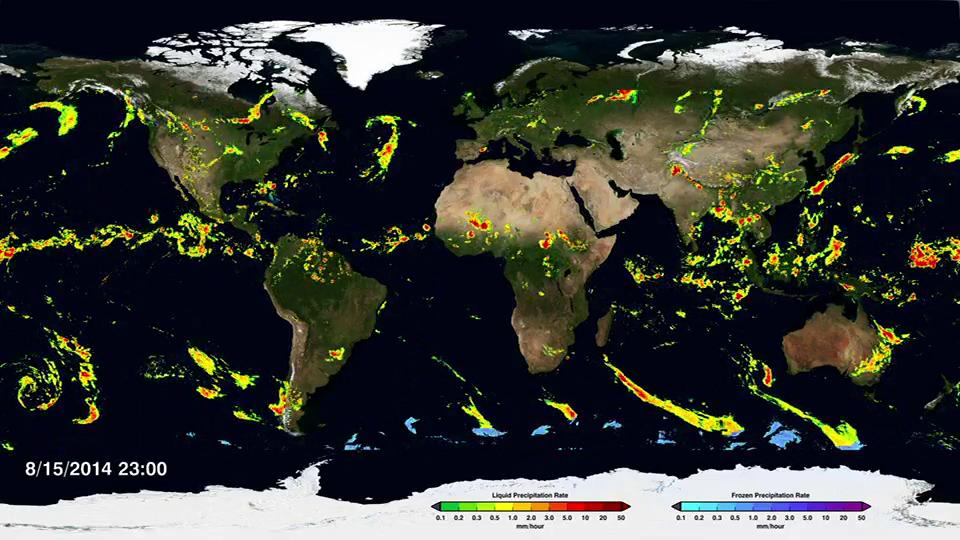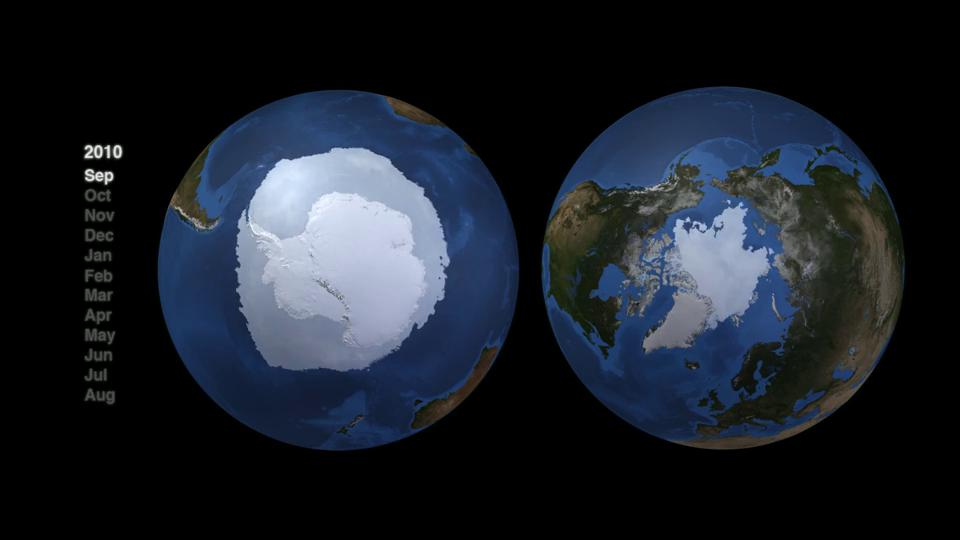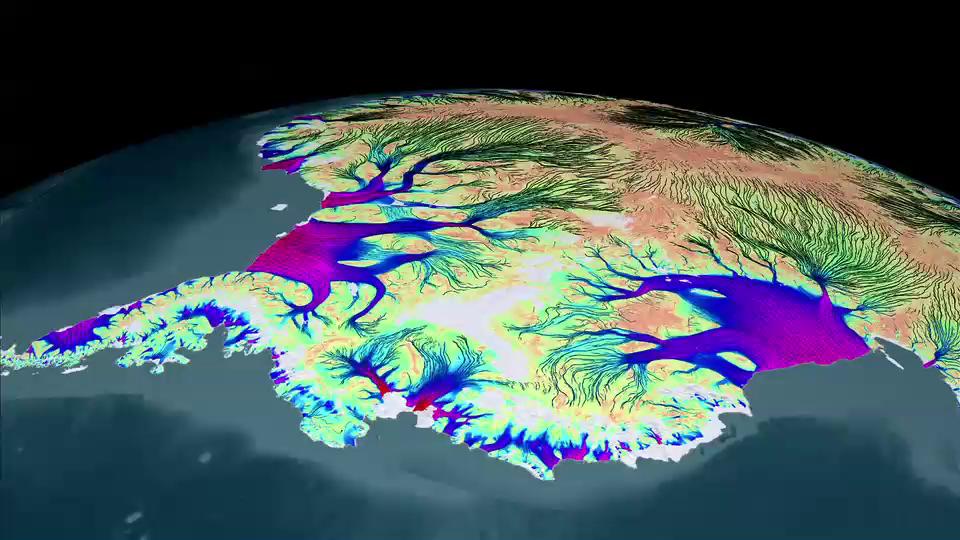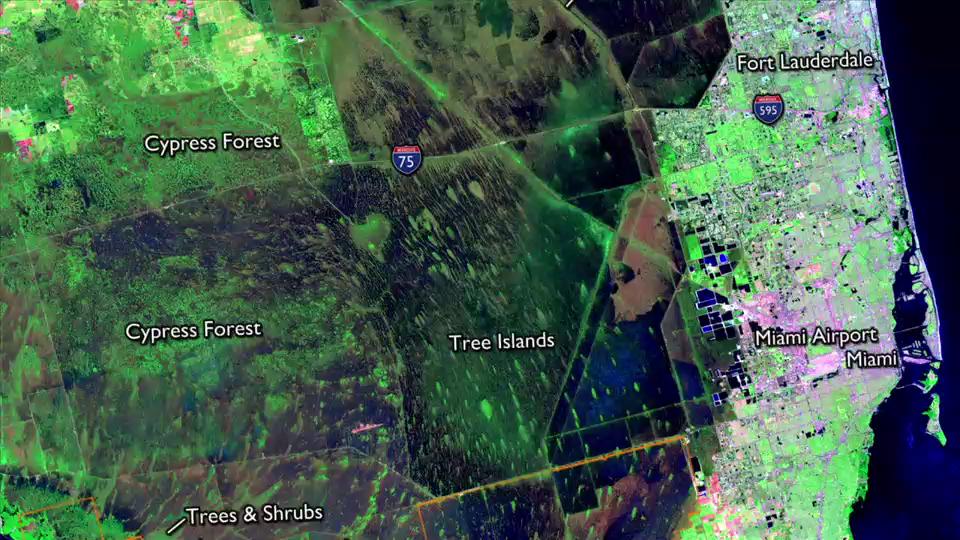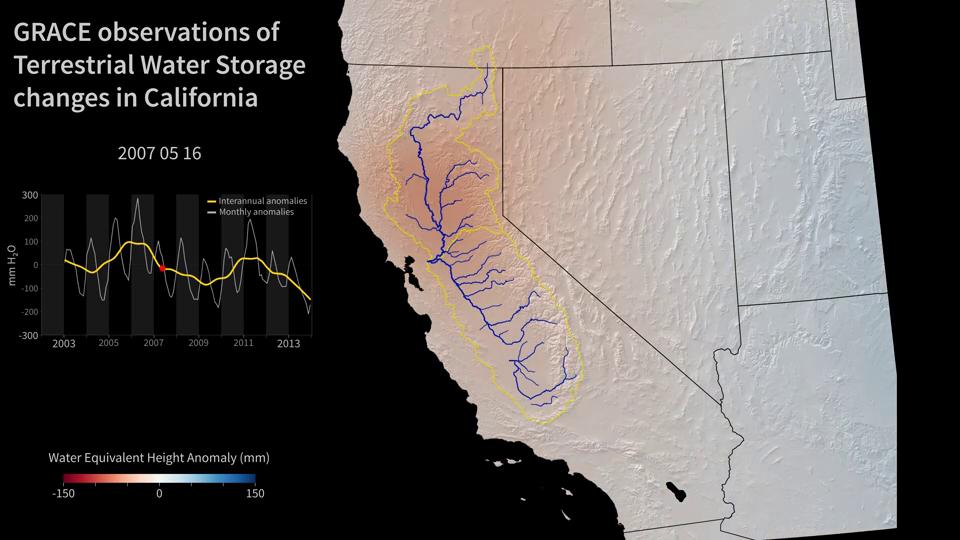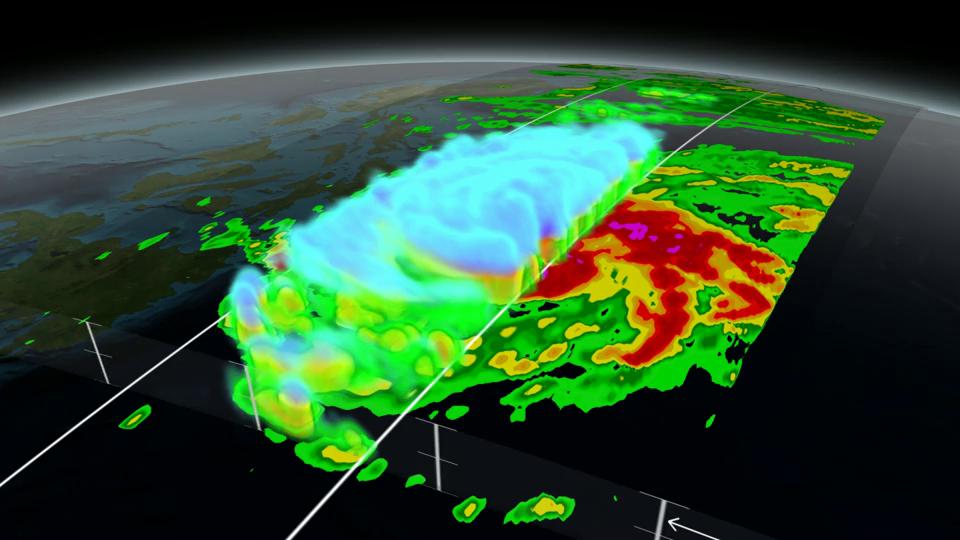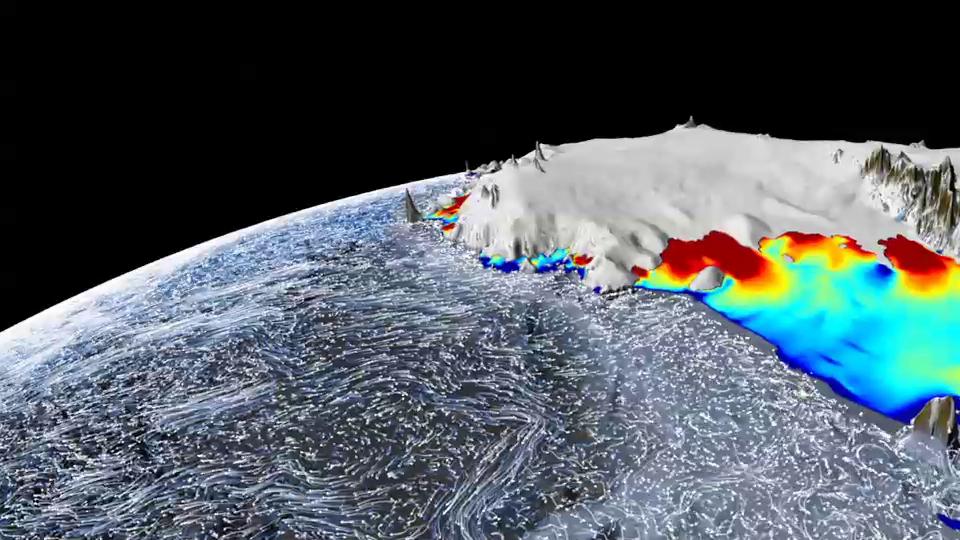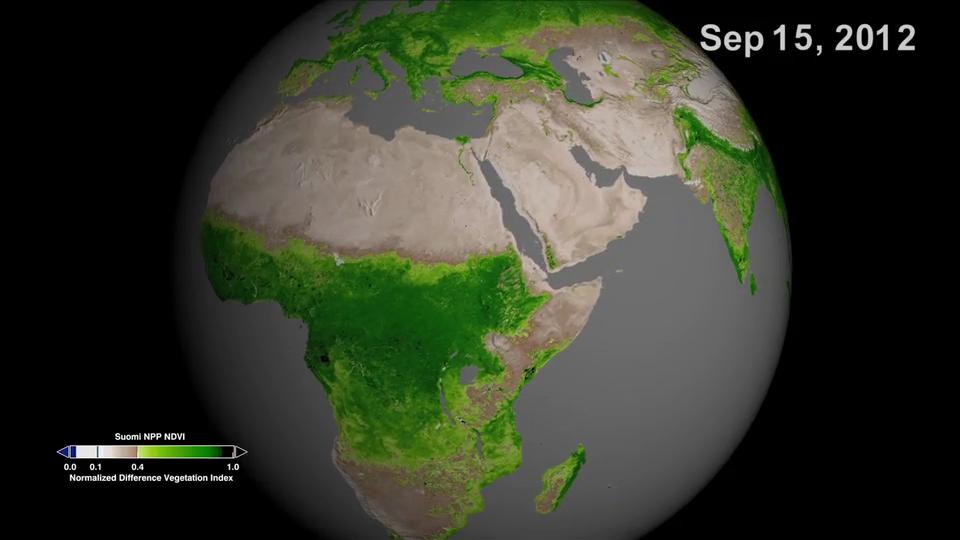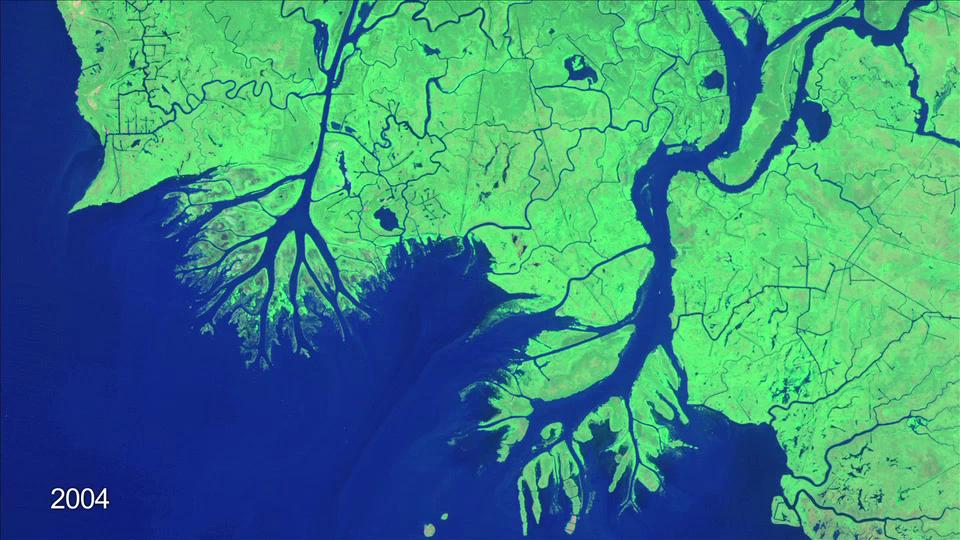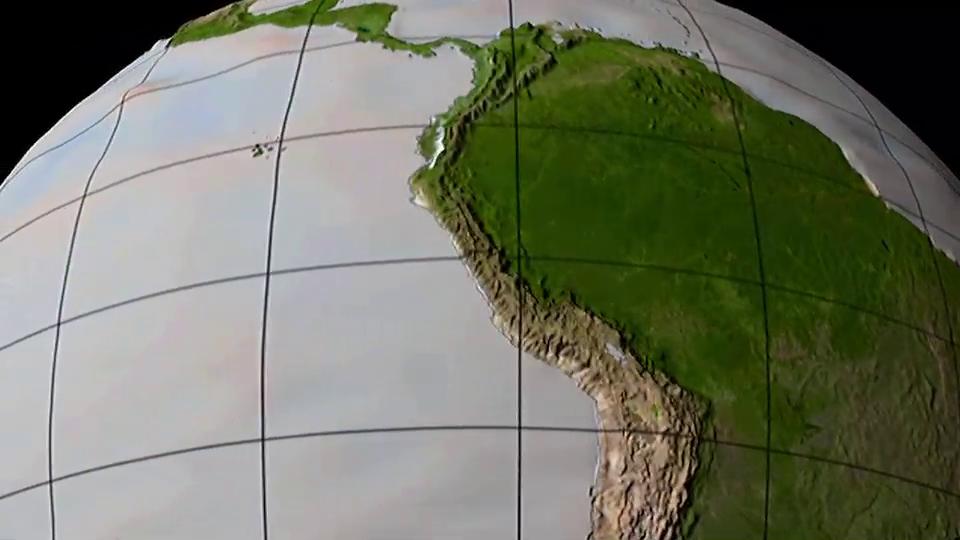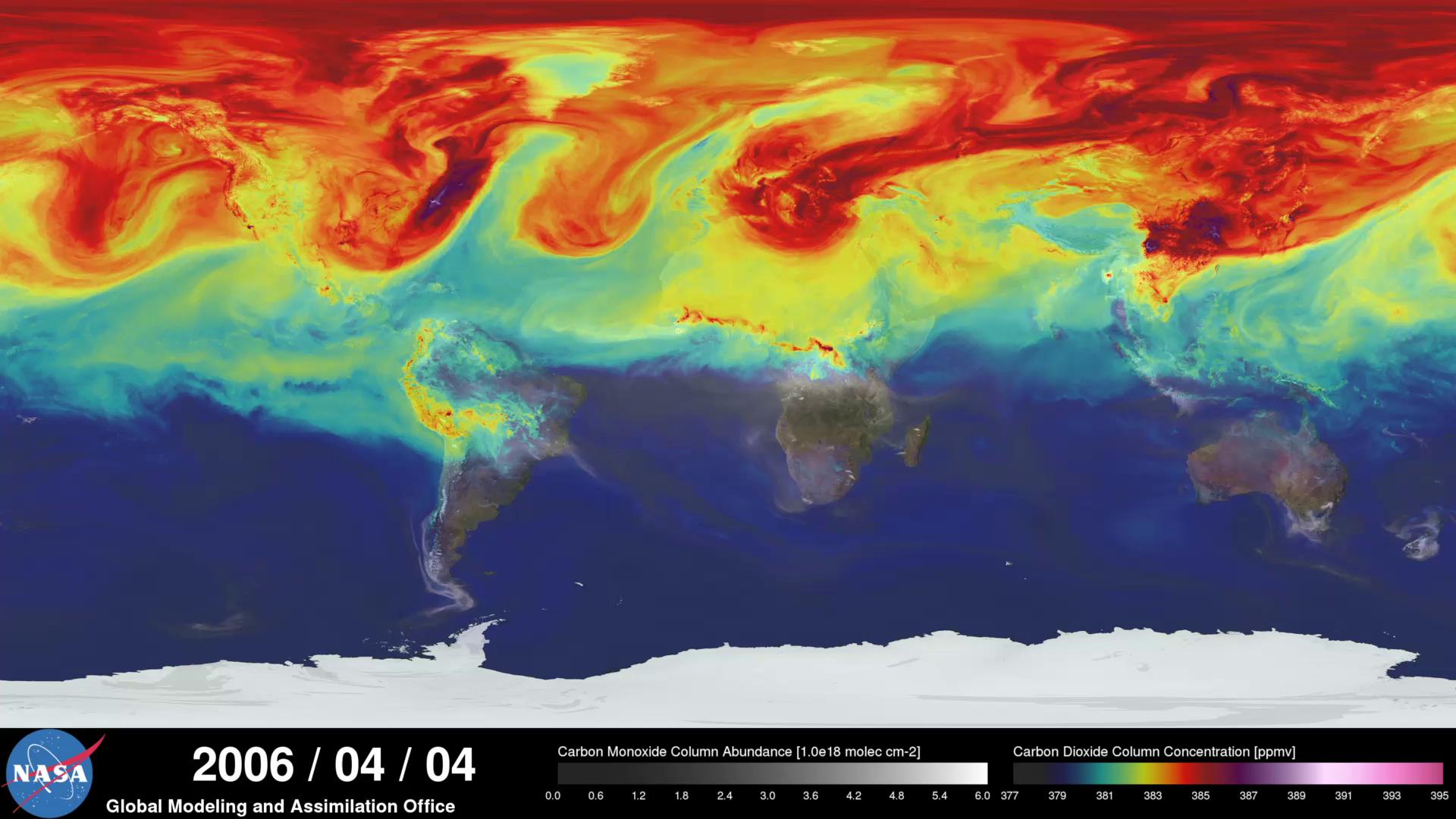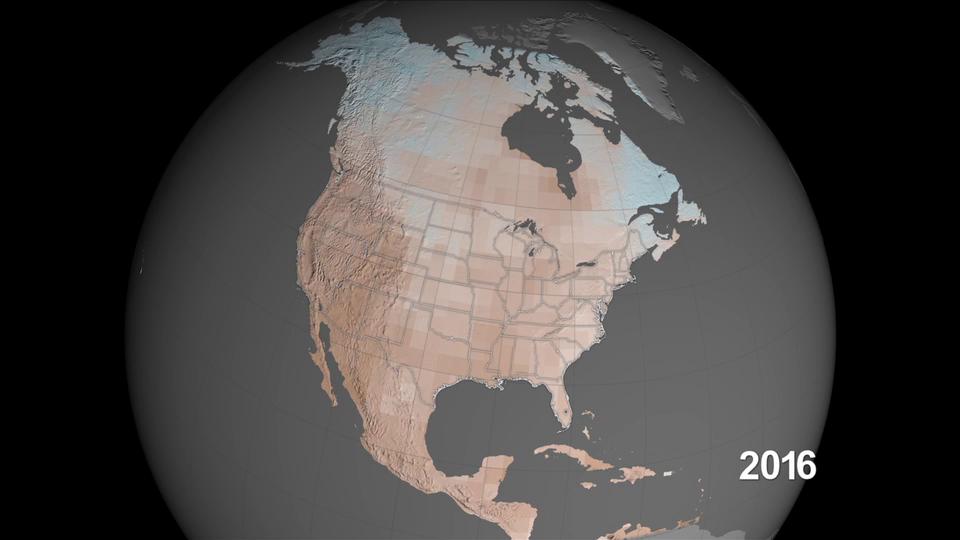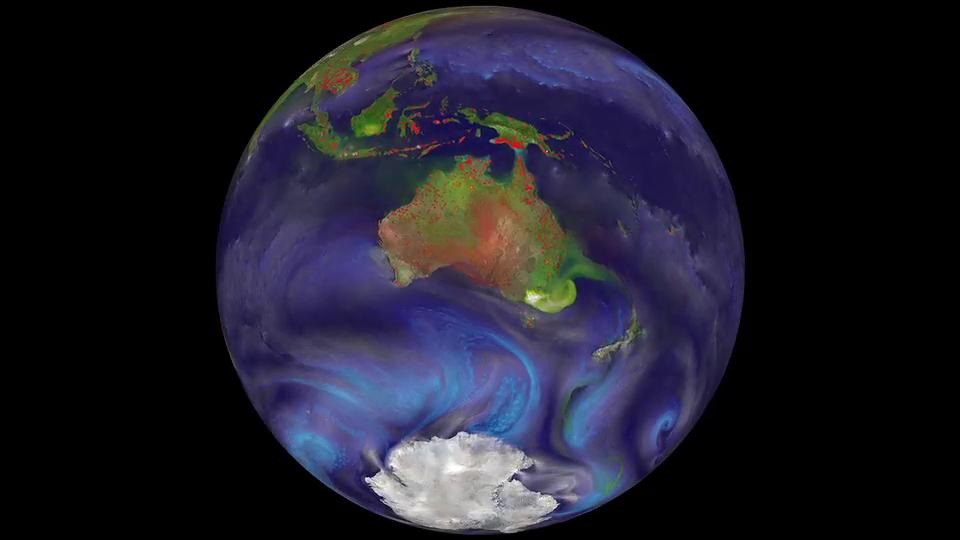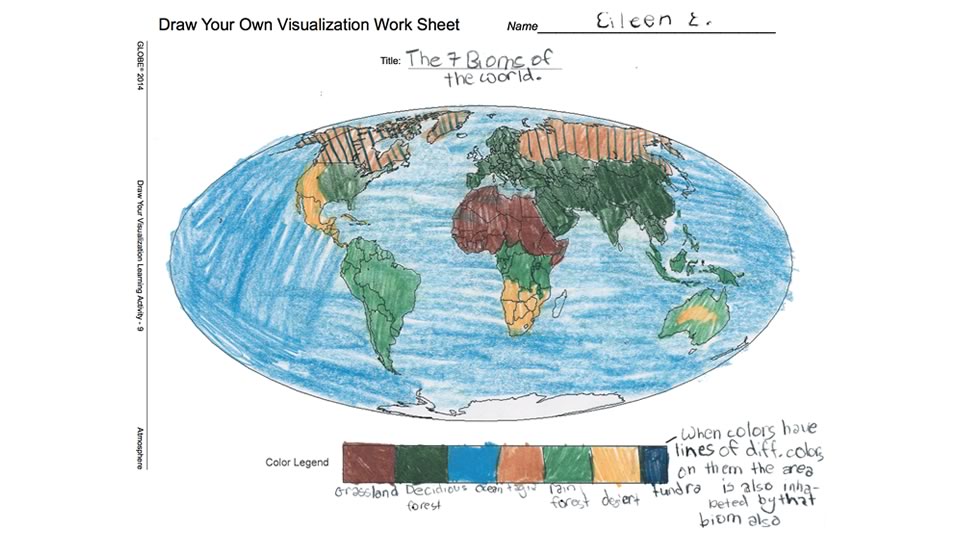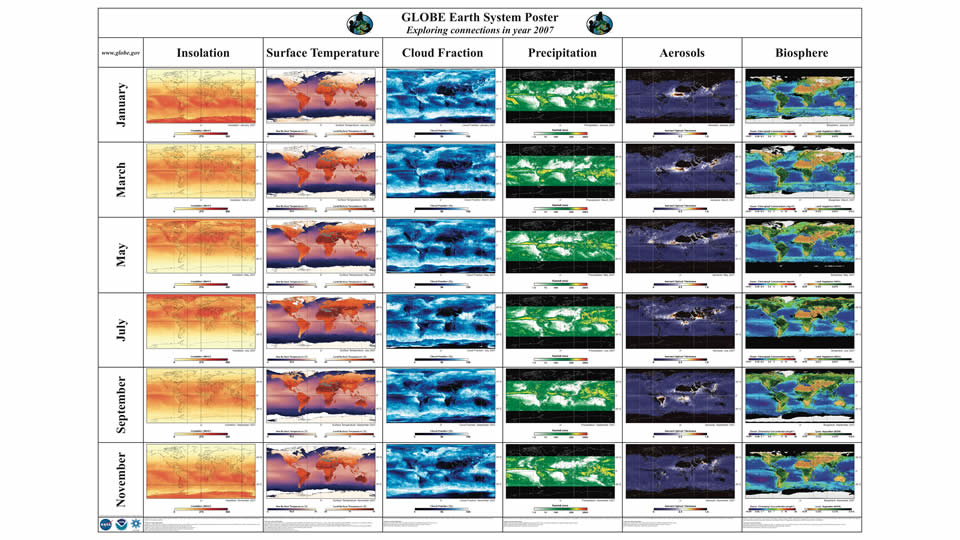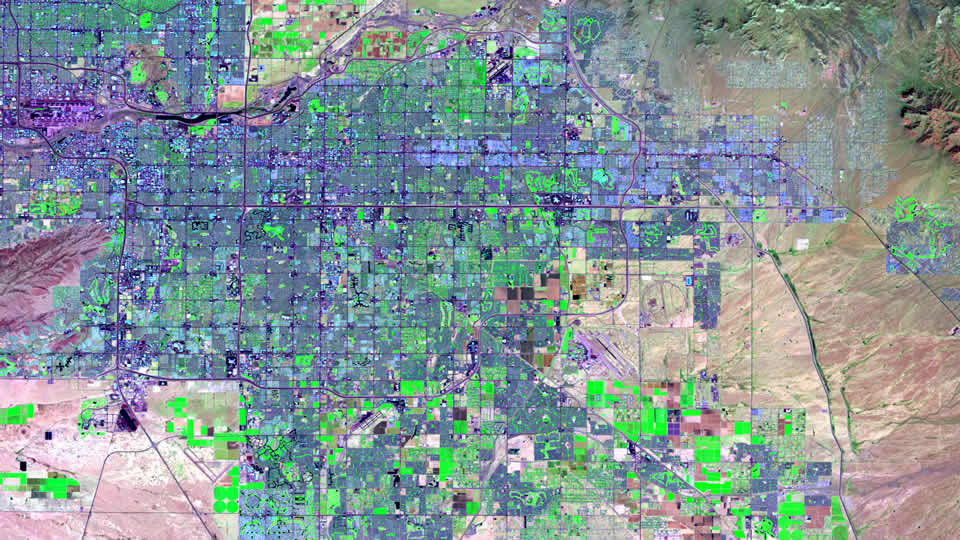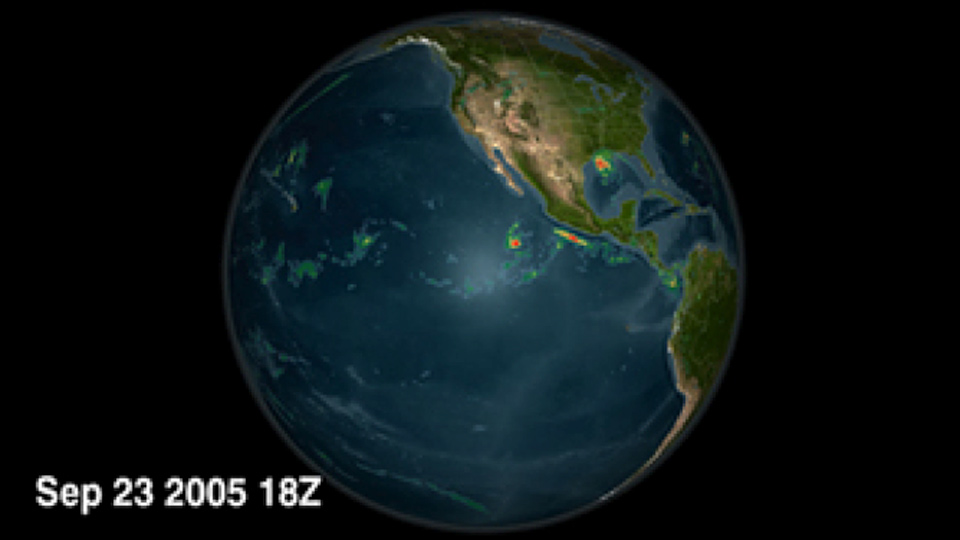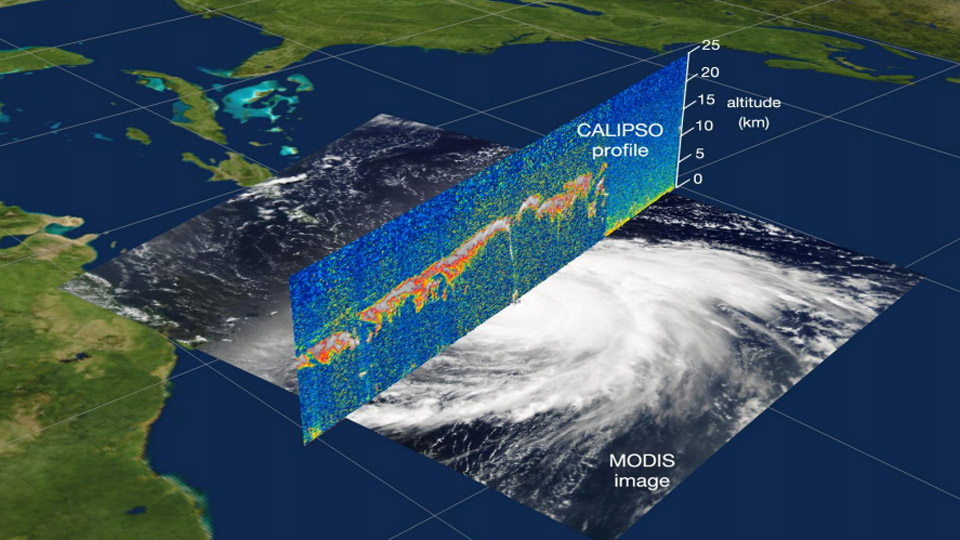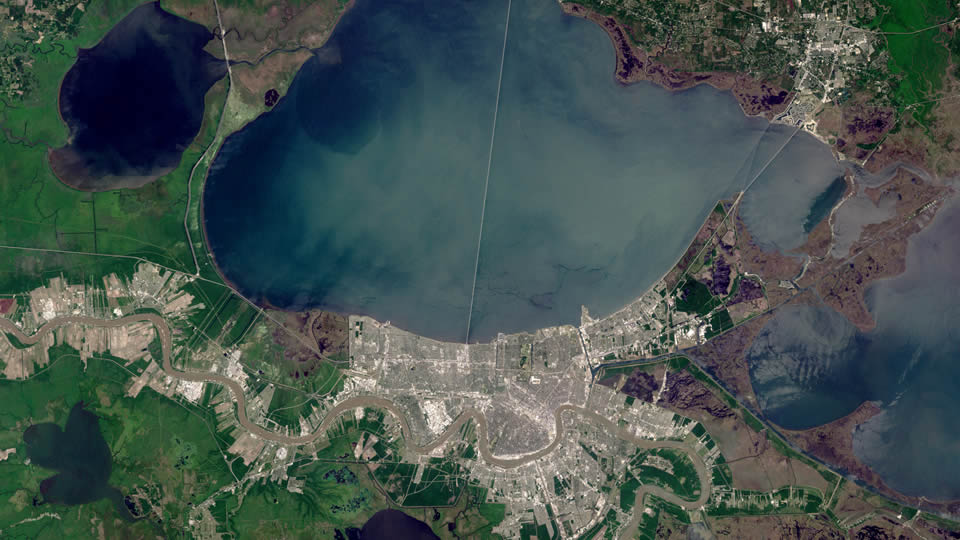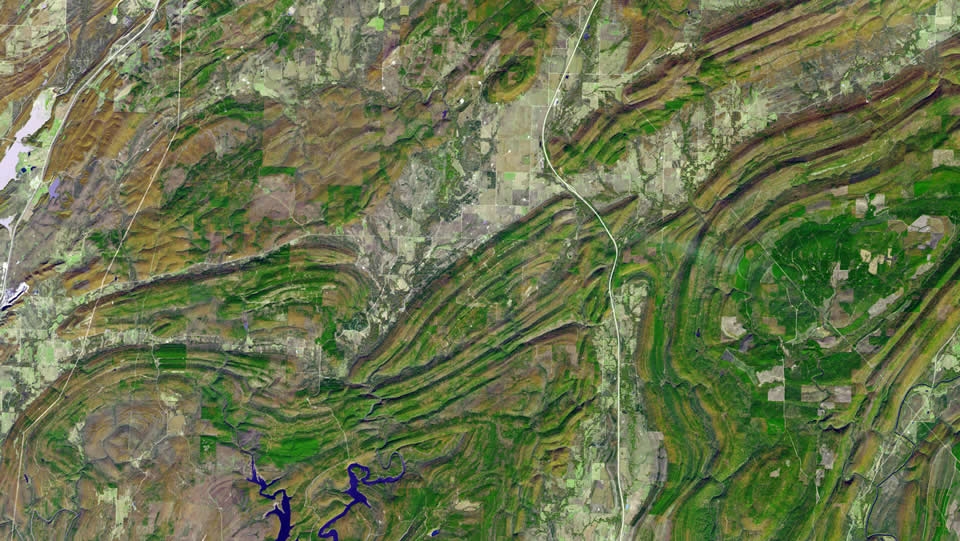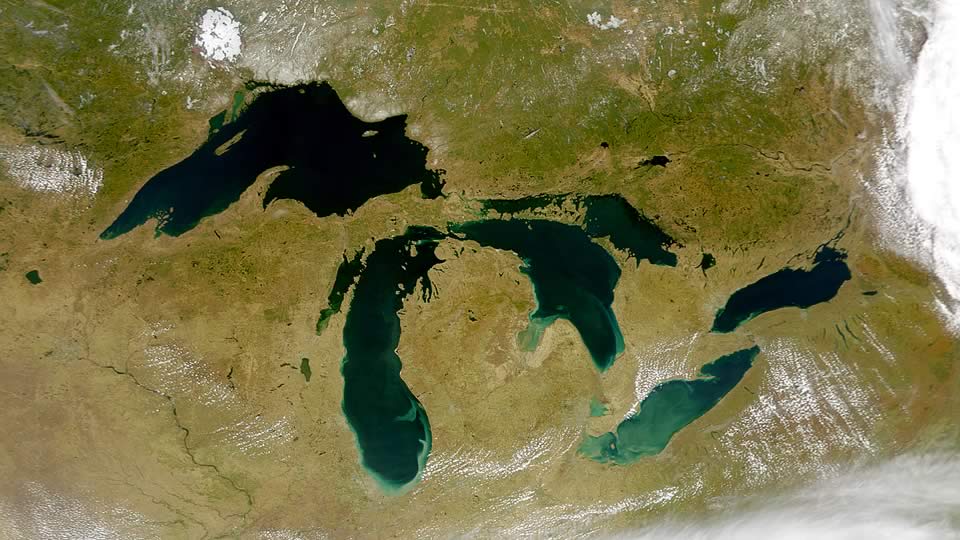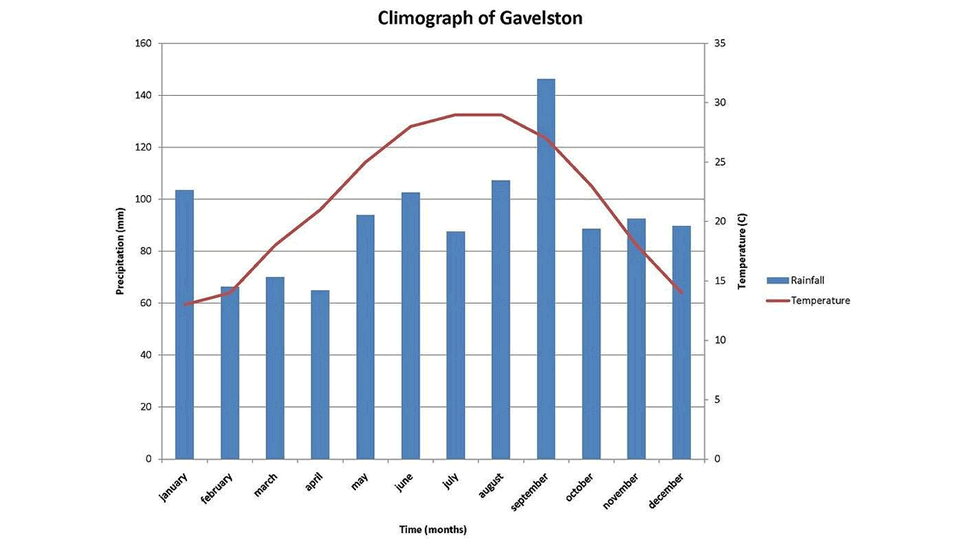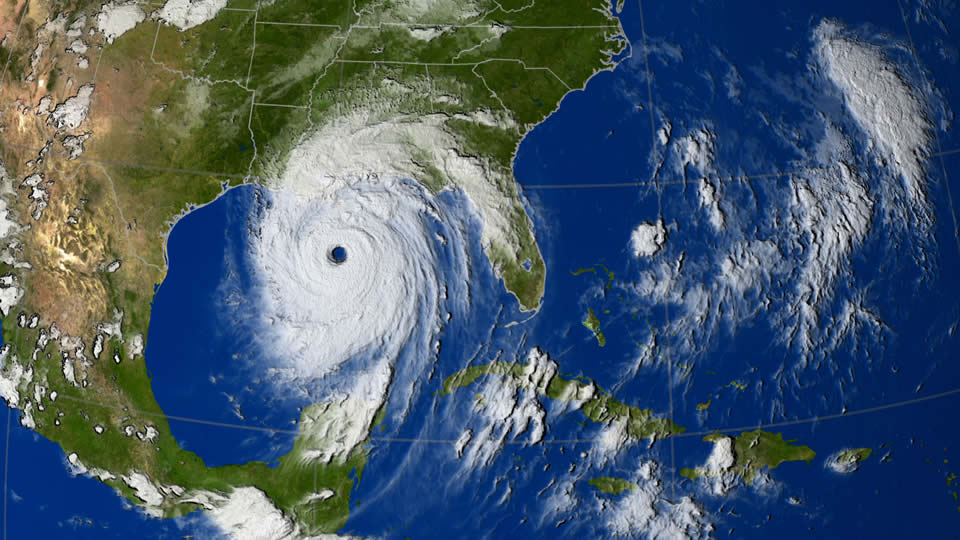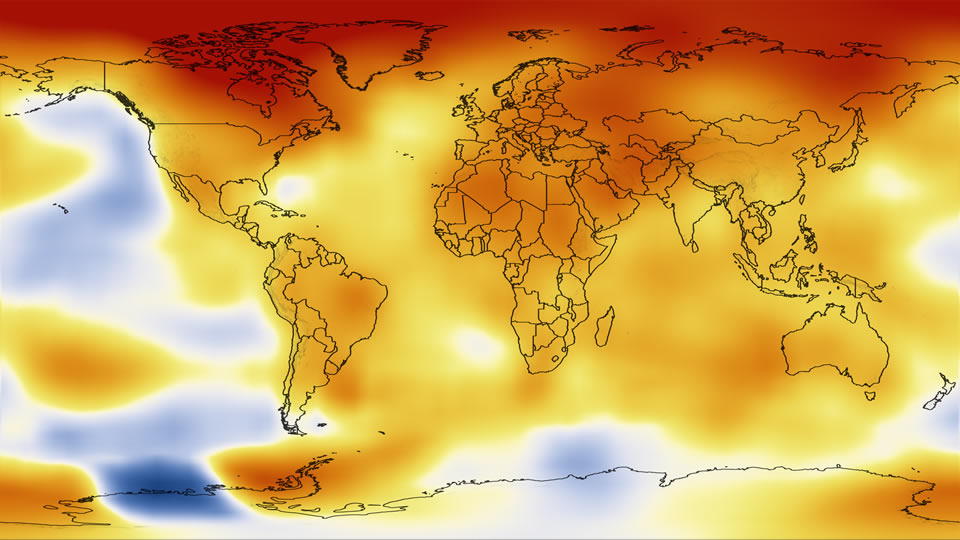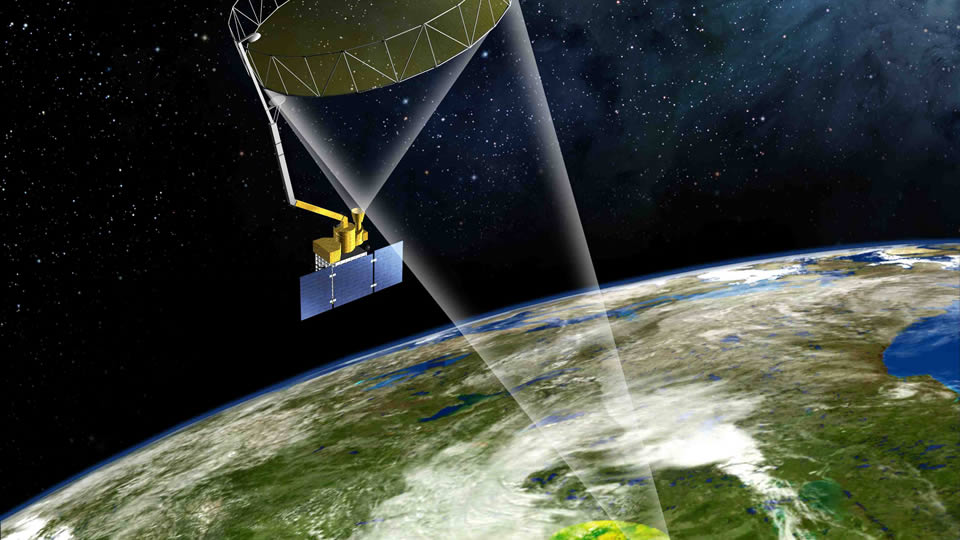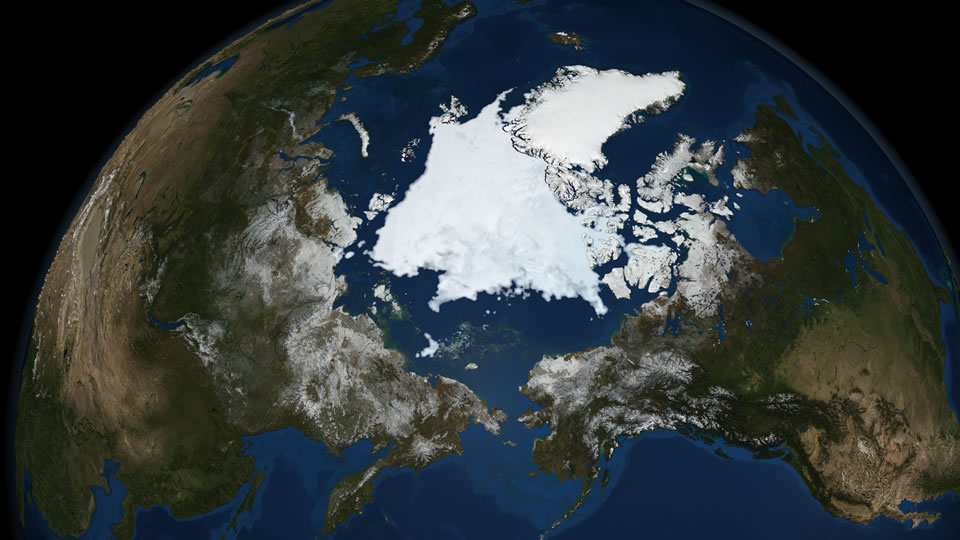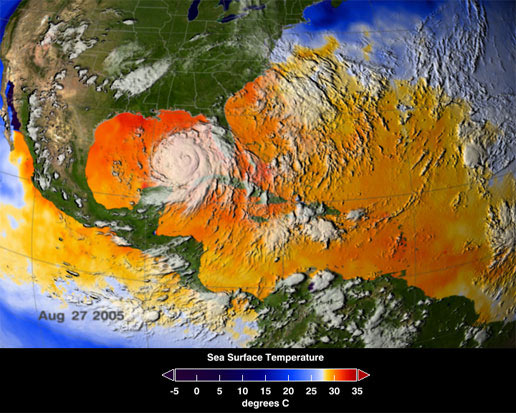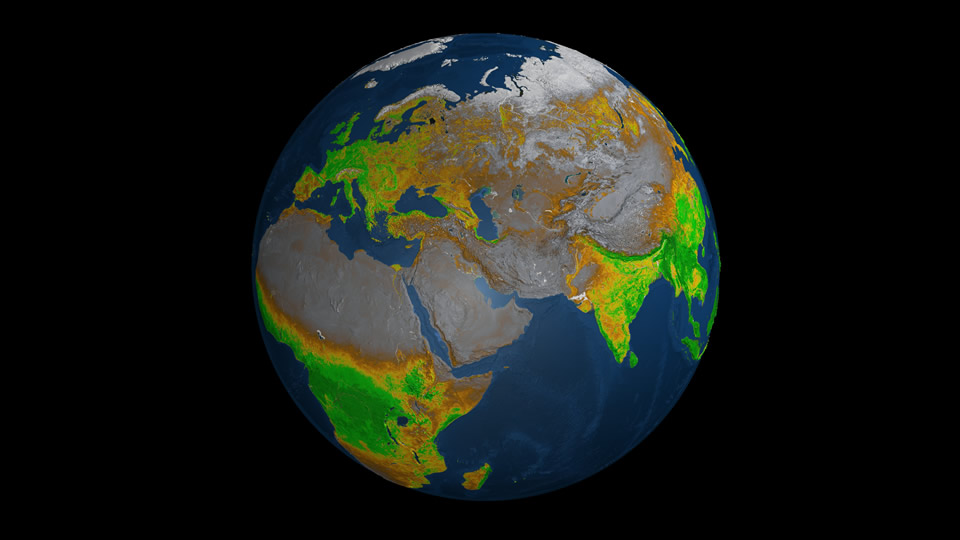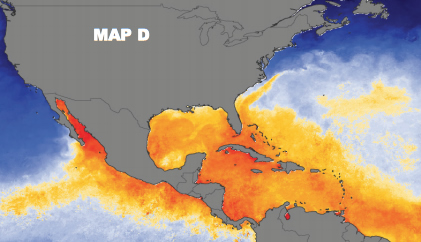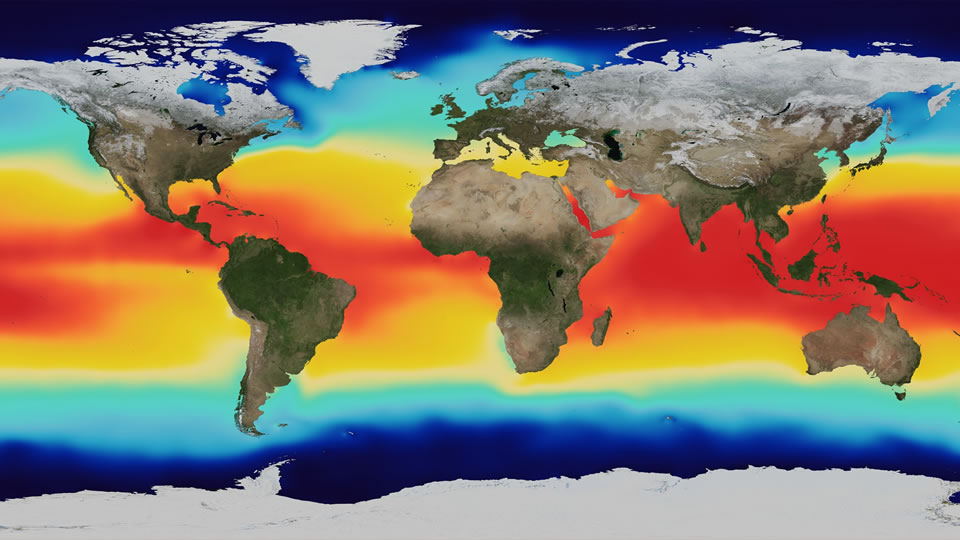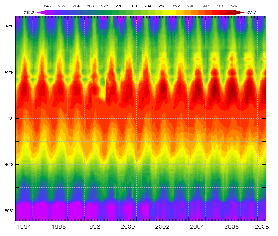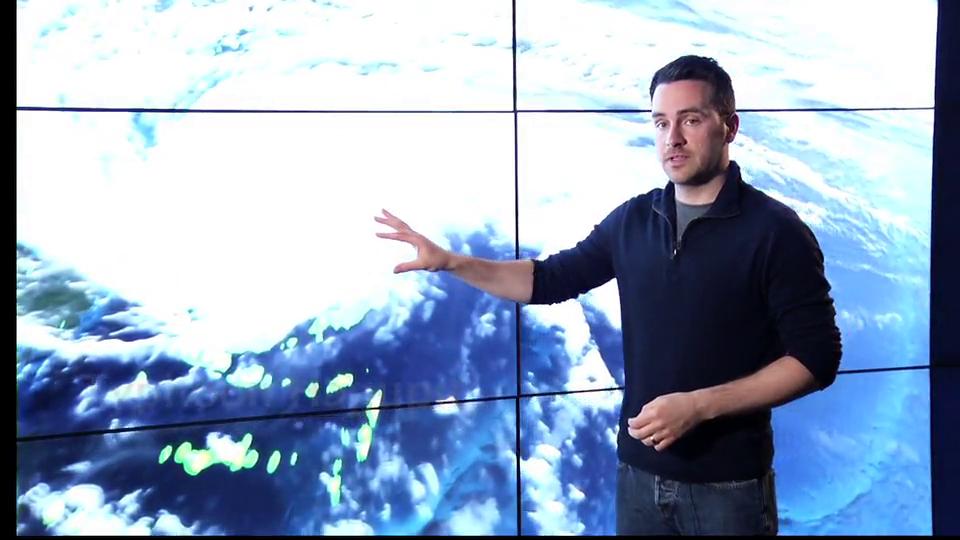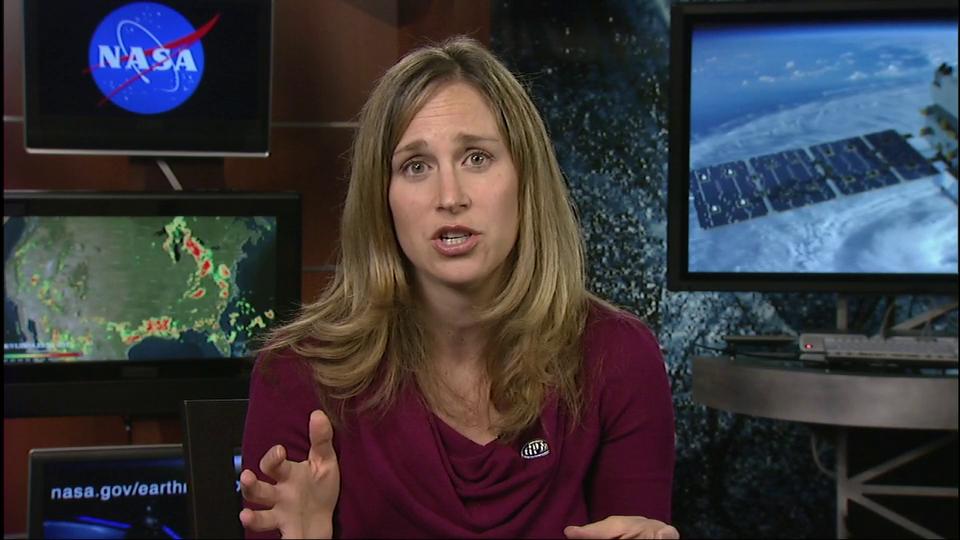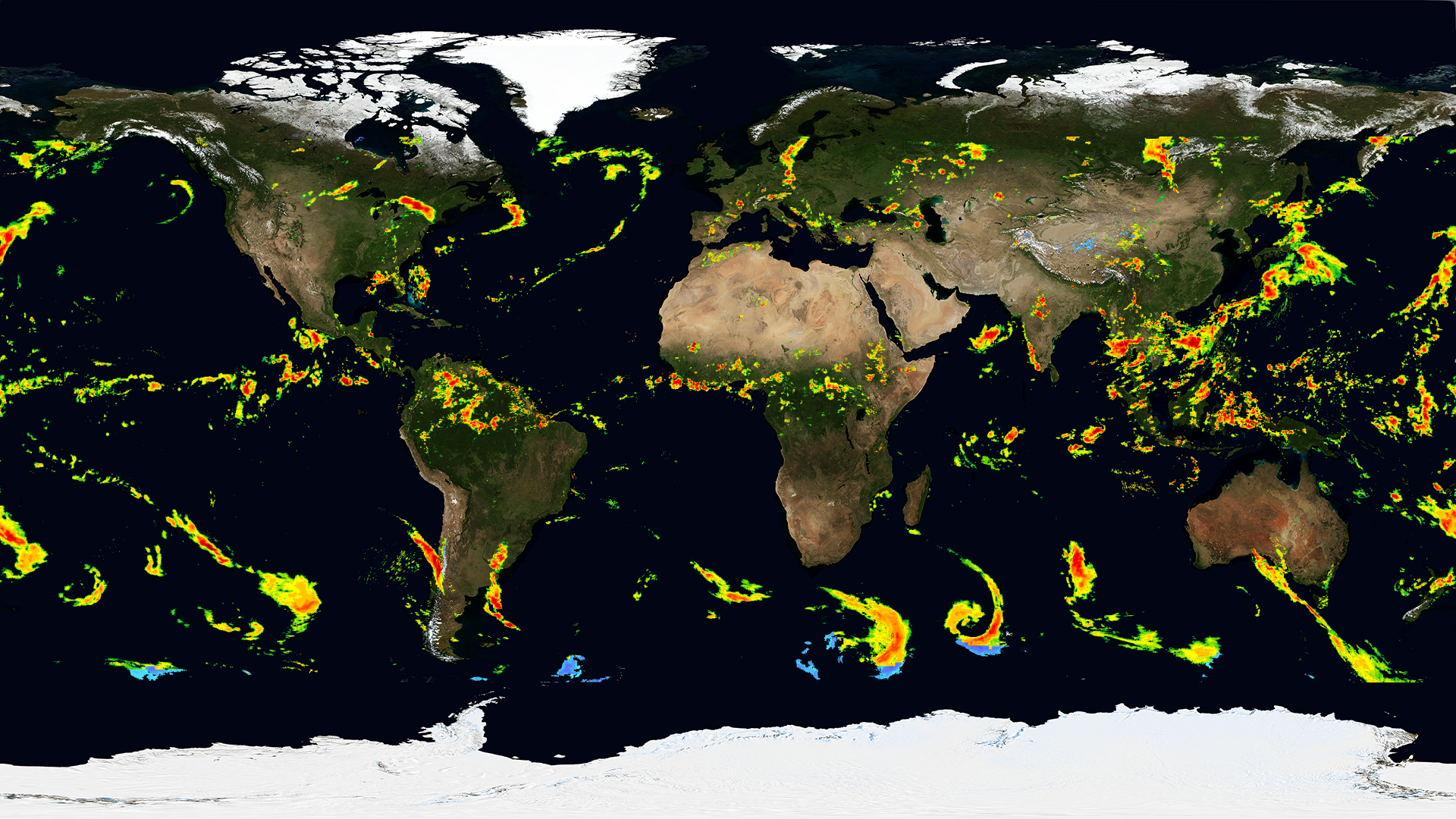Welcome to
Visualizing Earth Systems: A NASA Quick Start Guide for Educators
At the core of scientific visualization is the representation of data graphically - through images, animations, and videos - to improve understanding and develop insight. Visualizations allow us to explore data, phenomena and behavior; they are particularly effective for showing large scales of time and space, and "invisible" processes (e.g. flows of energy and matter) as integral parts of the models.
This page features visualizations from the NASA Scientific Visualization Studio (SVS). Each provides a unique perspective of the complexity and interconnectedness of Earth's systems. Some of the visualizations, marked annotated, include narration- making them ideal for introducing students to complex Earth science topics. Others, marked non-annotated, contain no narration or labels. They are designed to encourage student questioning and conversation - the first steps to inquiry-based learning.
K-12 Lessons: Links are provided to related learning resources for elementary, middle and high school. These are from NASA Wavelength, a reviewed collection of standards-based resources for Earth and space science education. You can find additional resources related to visualizing Earth systems here.
Video Interview (2015): Join NASA visualizer Kel Elkins in NASA's Scientific Visualization Studio as he shares insights into the creation of three of the visualizations listed below. In addition, Kel answers questions about his work, education and career.
Visualizations
Cause and Effect
Identifying cause and effect relationships can help us make predictions about the function of natural systems and their impact on the world. These relationships, whether simple or complex, are vital for forecasting weather and predicting Earth events in new contexts.
Energy and Matter
Follow a Saharan dust plume across the Atlantic, or track water on its global journey via the hydrological cycle to 'see' the role that energy plays in cycling matter within the Earth system. Energy powers the transformation and movement of matter in all Earth system processes.
Patterns, Similarities, and Differences
Explore the spatial patterns observed in meteorological data and learn how this information is used to predict weather and understand climate behavior. By observing patterns in data we can classify our observations and investigate underlying cause and effect relationships.
Scale, Proportion, and Quantity
The Earth's system is characterized by the interaction of processes that take place on molecular (very small) and planetary (very large) spatial scales, as well as on short and long time scales. Scientific visualizations allow us to experience Earth processes at faster speeds, and at manageable smaller scales, facilitating data analysis and enhancing understanding.
Stability and Change
The Earth's system exemplifies stability and change. Change and rates of change can be observed and quantified over very short or long periods of time and at various spatial scales (e.g., from landscape level to global processes). Understanding stability and change in Earth processes contributes to a more complete understanding of the Earth system.
Systems and System Models
Scientific data is used to develop models that describe Earth processes with fidelity and project alternate scenarios when baseline conditions are changed. Scientific models allow us to experiment with and understand phenomena that are too small, too large, too fast, or too slow to detect directly using our senses.
K-12 Lessons
Elementary School
Draw Your Own Visualization
Students learn about visualization elements by designing and drawing their own visualizations.
Grade Level: K-5
Exploring Relationships Between Two Variables
By examining a time series of environmental data maps, students work in teams to explore the connections between parts of the Earth system.
This activity is part of the GLOBE Earth System Poster Learning Activities http://www.globe.gov/documents/10157/334459/Earth_System_Poster_07_Activities.pdf. The images can be used with students to find patterns among different environmental data, understand the relationship among different environmental parameters, and understand how the data changes seasonally and over longer time scales.
A digital version of the poster is provided by the MY NASA DATA project for additional years and to enables interactive exploration of the data in more detail. http://mynasadata.larc.nasa.gov/globe/
Grade Level: k-5
How does color help us understand images from space?
Students interpret colors in a range of satellite images to recognize global vegetation patterns. They distinguish between true color and false color images and examine how geographers and scientists use false color images to study the Earth's surface.
Grade Level: K-5
MY NASA DATA: Rock Star Precipitation
In this activity students assume the roles of musicians planning a world tour and analyze precipitation data from tour cities to predict the best time of year to perform in these areas. Step-by-step instructions for use of the MY NASA DATA Live Access Server (LAS) guide students through selecting a data set, importing the data into a spreadsheet, creating graphs, and analyzing data plots.
Grade Level: K-5
Vertical Height of the Atmosphere
This lesson includes four activities. Activity 1 introduces concepts related to distance, including length and height and units of measurement. Students are asked to make comparisons of distances. In activity 2, students learn about the vertical profile of the atmosphere. They work with a graph and plot the heights of objects and the layers of the atmosphere. In activity 3, students learn about other forms of visual displays using satellite imagery. They compare images of a hurricane using two different satellite images. One image is looking down on the hurricane from space, the other looks (from CALIPSO) through the hurricane to display a profile of the hurricane. Activity 4 reinforces the concept of the vertical nature of the atmosphere. Students will take a CALIPSO satellite image that shows a profile of the atmosphere and use this information to plot mountains and clouds on their own graph of the atmosphere.
Grade Level: K-5
What Are Physical and Human-made Features?
Students identify physical and human-made features using satellite images. They match images of physical features with definitions and identify physical and human features in several images of United States cities.
Grade Level: K-5
Middle School
Blue Marble Matches: Using Earth for Planetary Comparisons
In this activity students are introduced to geologic processes on Earth and model how scientists better understand other planetary bodies in the solar system through comparisons with our Earth.
Grade Level: 6-8
Climate Change Online Lab
Students use NASA's Global Climate Change website to research five key indicators of Earth's climate health and use this information, shared in their expert groups, to create an informative poster about their assigned key indicator.
Grade Level: 6-8
Draw Your Own Visualization
Students learn about visualization elements by designing and drawing their own visualizations.
Grade Level: 6-8
Exploring Relationships Between Two Variables
By examining a time series of environmental data maps, students work in teams to explore the connections between parts of the Earth system.
This activity is part of the GLOBE Earth System Poster Learning Activities http://www.globe.gov/documents/10157/334459/Earth_System_Poster_07_Activities.pdf. The images can be used with students to find patterns among different environmental data, understand the relationship among different environmental parameters, and understand how the data changes seasonally and over longer time scales.
A digital version of the poster is provided by the MY NASA DATA project for additional years and to enables interactive exploration of the data in more detail. http://mynasadata.larc.nasa.gov/globe/
Grade Level: 6-8
Geographical Influences on Climate
Climatograms from different U.S. locations are used to observe patterns in temperature and precipitation. After describing geographical features near these locations, students use graphical data to compare and identify the effects that mountains, oceans, elevation, and latitude have on temperature and precipitation.
Grade Level: 6-8
Hurricane Katrina: A Problem-Based Learning Module
This problem-based learning module asks students to consider how climate change could impact the frequency and intensity of hurricanes. They study the trends and impacts of hurricanes on coastal regions and are guided through numerous resources to explore this question for a final report.
Grade Level: 6-8
Learning to Use Visualizations
This activity introduces students to the idea of using visualizations as a tool for scientific problem-solving. Elevation and temperature are used as examples.
Grade Level: 6-8
Monitoring the Global Environment
This is an online interactive module with lessons plans to teach students about remote-sensing capabilities, spatial and temporal scale, and satellites that are continuously collecting data to monitor our Earth.
Grade Level: 6-8
MY NASA DATA: How Does the Earth's Energy Budget Relate to Polar Ice?
Using a microset of satellite data, students explore the relationship between amounts of vegetation, precipitation, and surface temperature to better understand the Earth's climate zones.
Grade Level: 6-8
MY NASA DATA: Surface Air Temperature Trends of the Caribbean
Students analyze satellite data to determine the changes in near-surface air temperature at different times of the year over the Caribbean Sea.
Grade Level: 6-8
MY NASA DATA: Using Vegetation, Precipitation and Surface Temperature to Study Climate Zones
Using a microset of satellite data, students explore the relationship between amounts of vegetation, precipitation, and surface temperature to better understand the Earth's climate zones.
Grade Level: 6-8
High School
Exploring Color Maps: Using Stratospheric Ozone Data
Through the use of the 5E instructional model, students discover the value of using color maps to visualize data. The activity requires students to create a color map of the ozone hole from Dobson data values derived from the Aura satellite. Students then interpret that map and compare and evaluate different color scales.
Grade Level: 9-12
Hurricane Katrina: A Problem-Based Learning Module
This problem-based learning module asks students to consider how climate change could impact the frequency and intensity of hurricanes. They study the trends and impacts of hurricanes on coastal regions and are guided through numerous resources to explore this question for a final report.
Grade Level: 9-12
Learning to Use Visualizations
This activity introduces students to the idea of using visualizations as a tool for scientific problem-solving. Elevation and temperature are used as examples.
Grade Level: 9-12
Monitoring the Global Environment
This is an online interactive module with lessons plans to teach students about remote-sensing capabilities, spatial and temporal scale, and satellites that are continuously collecting data to monitor our Earth.
Grade Level: 9-12
MY NASA DATA: Ocean Currents and Sea Surface Temperature
Using data-based ocean currents and sea surface temperature maps, students analyze the links between these measurements and draw directional movement of currents.
Grade Level: 9-12
MY NASA DATA: Surface Air Temperature Trends of the Caribbean
Students analyze satellite data to determine the changes in near-surface air temperature at different times of the year over the Caribbean Sea.
Grade Level: 9-12
MY NASA DATA: Using Hovmuller Plots to Better Understand Temperature and Salinity
A Hovmuller plot is a diagram that displays data patterns from a selected latitude or longitude over a time period. Through a storyline and several samples, students are introduced to a Hovmuller plot of temperature data along a longitude in the eastern United States. Students then create salinity and precipitation plots using data from the MY NASA DATA Live Access Server.
Grade Level: 10-12
Interviews
Interviews
Interview with NASA visualizer Kel Elkins
Follow along as NASA visualizer Kel Elkins walks you through three visualizations (Dust Crossing, Typhoon Hagupit, and Aquarius Sea Surface Salinity) and answers questions about his work, education, and career.
Interview with Global Precipitation Measurement Mission Scientists
In this interview, GPM scientists answer student questions about the IMERG Global Precipitation dataset and the GPM mission. The questions and what time they're answered in the video are below:
- How can the rain that falls in your backyard affect people in Europe? – 00:11
- How long did it take to build this technology? Can it track down any other precipitation? – 01:05
- When do the most strange precipitation patterns occur throughout the world and where do these patterns occur? – 01:45
- Why is it so important that we study precipitation? – 02:41
- Which areas of the world get the most precipitation? The least? – 03:49
- Why do certain parts of the U.S. get more precipitation than others? – 05:08
- How does precipitation affect certain ecosystems? – 05:56
- there a pattern that these weather conditions follow on a yearly basis? – 08:07
- How do these patterns change from year to year? – 09:00
- How is it [GPM] able to tell what type of precipitation is under the clouds? – 07:31
- How is this different from the technology we already have? – 06:49
- Thanks to the new way of taking data, have any previous assumptions been debunked, or proven? – 10:25
Inquiry Teaching
Inquiry Teaching
Inquiry Teaching with Visualizations
The many non-narrated and non-annotated visualizations above provide excellent opportunities for inquiry-based learning. This paper describes an introductory approach to teaching with these unlabeled visualizations.
